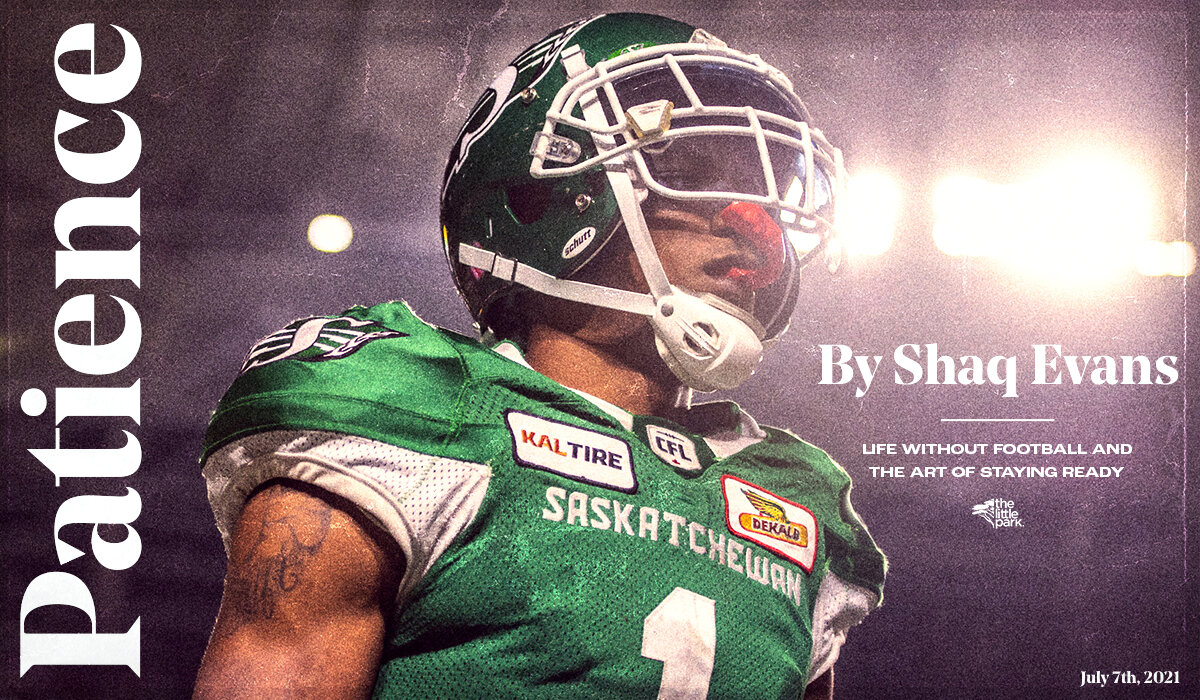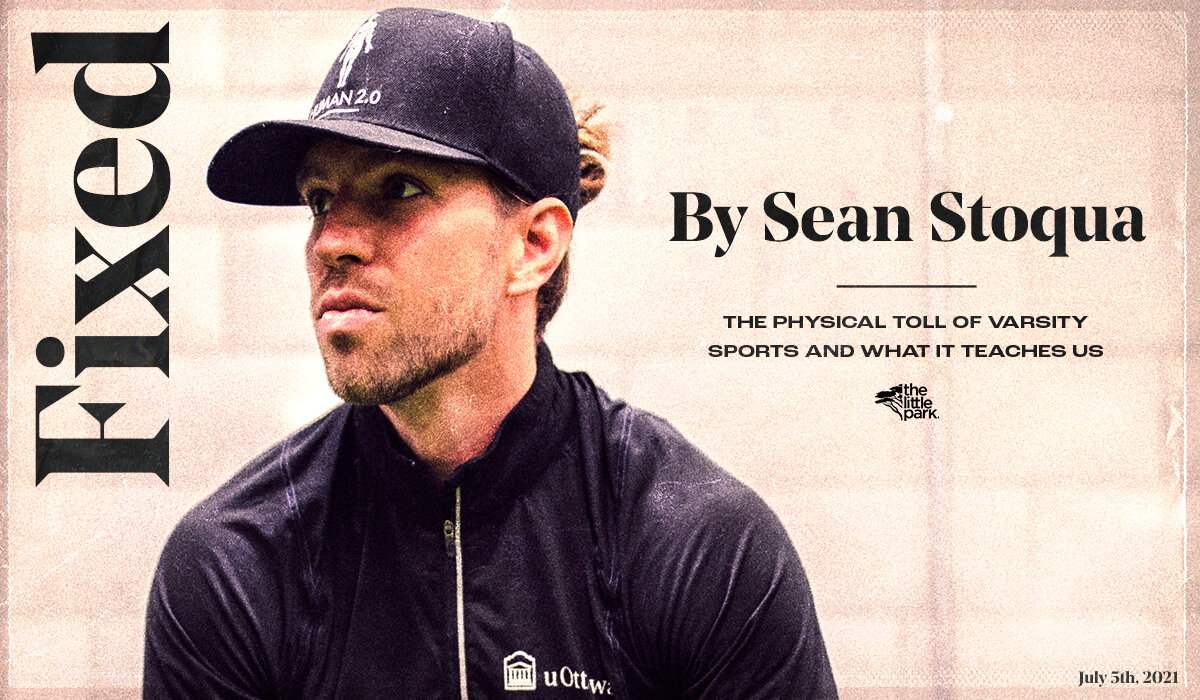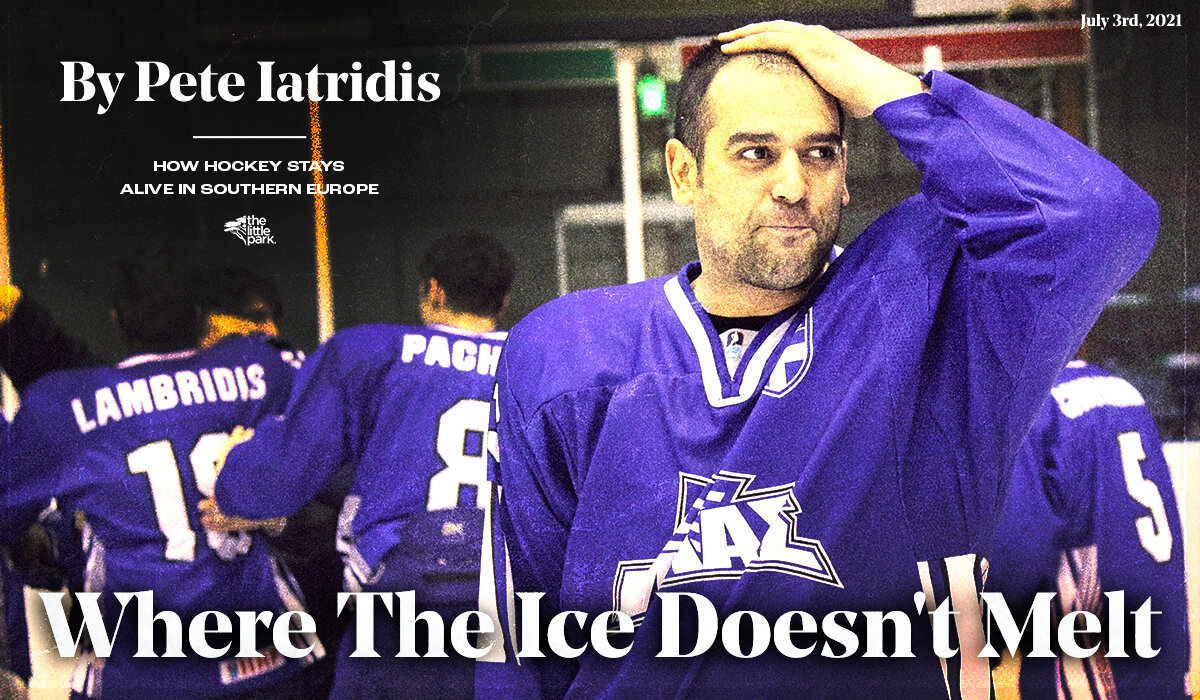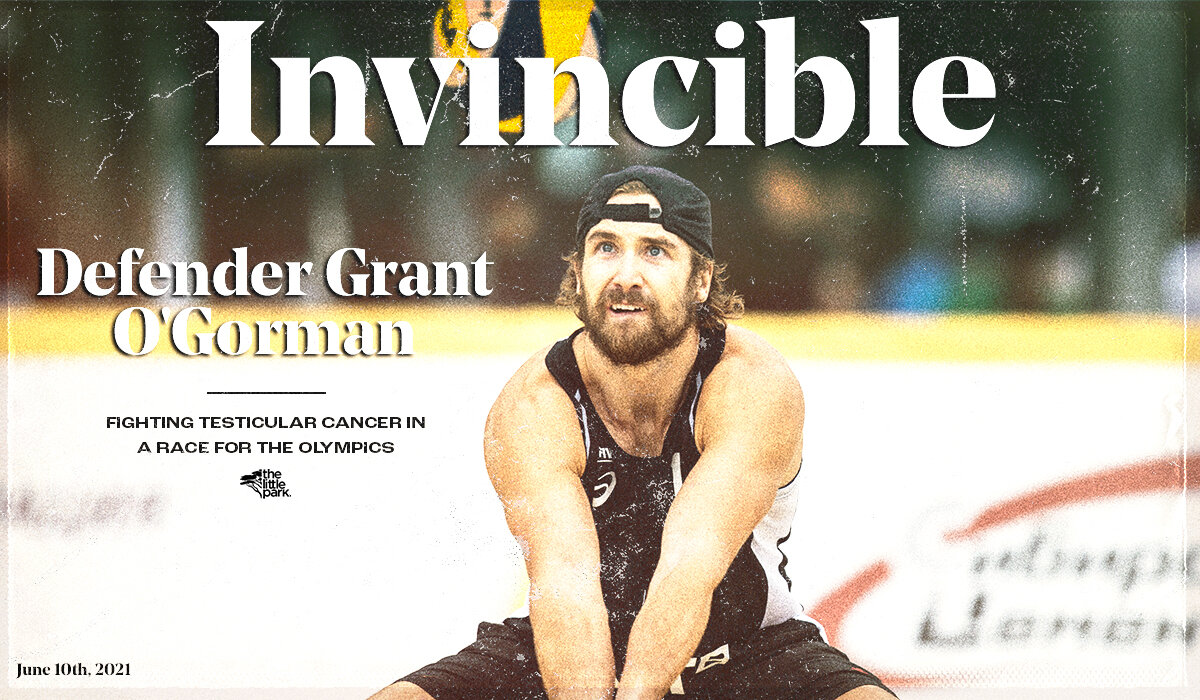It all started in 1993.
Oblivious to the sport, or why I was on a sheet of ice with this round, granite-looking object, my dad would set me on top of the rock, make me hold on tight to the handle, and rush it down the sheet in a spinning motion.
There I went, flying down the sheet doing hundreds of revolutions, nothing to stop me but the end boards. Ridiculous, right? In all honesty, it became my favourite thing to do.
I recently embarked on a journey to the Brier, which to any curler is something that touches the same equivocal senses as a golfer stepping up to the first tee at Augusta National.
True ecstasy.
The magnitude of this event, and the frenzy it creates not only in Canada, but around the world, is indescribable.
Little did I know that curling, the thing I grew up watching, and dreaming about, would lead me here.
My dad was a Canadian junior champion in 1983 and seven years later represented Saskatchewan at the Brier with three of his brothers. My entire family grew up watching curling, cheering for my dad/uncles/aunts/cousins, and we would often travel around watching them curl in bonspiels.
I fell in love with the game, wanted everyone’s signature on tour, to go to any local club on weekends and throw rocks with Pops. I wanted to go watch the Brier any time it was remotely close to home. And one day, I wanted to do what he did and compete in it.
“Curling is great, it’s a fantastic sport, and I know you have a passion for it. But school and your education is more important,” he preached. “You can curl forever; you must first set yourself up for the future.”
As much as I wanted to go out and try to conquer the curling world, I knew school was probably the right choice.
I spent five years at the University of Regina studying petroleum engineering and played university football for the Rams. I was so busy I essentially had to stop curling as the seasons conflicted.
Upon finishing in 2015, I had this fire deep inside me that still hadn’t burned out.
Matt, Braeden, Dustin and I were originally just four guys who came together to play competitive curling, something we all share a love and passion for, in our backyard we call the Prairies. Our aspirations were higher than our ranking and hearts embodied more desire than our team bank account attested. Most teams we embarked to challenge had upwards of $250,000 in corporate sponsorship, to which we each stroked a cheque for $1,500 in order to cover our costs during the first three to four months of our debut season.
We knew the consequences and had a choice. We could very well lose a decent chunk of money that year, having next to no corporate sponsorship, or we could work our tails off and become the force we knew we could be.
After hundreds of hours in the gym, and countless practices at the Highland Curling Club, we rose up the world rankings, winning four tour events in 2019 including a World Cup event in Sweden.
Our biggest one of all was a podium finish at arguably one of the toughest Canadian championship fields anyone has ever seen.
The Game
There are many “games” within the game. Who and what are you playing for? What’s your motivation factor and who’s your intimidation factor? What’s the schedule lineup and the playoff picture?
35 minutes: Pre-game.
Brush teeth, check hair for the TVs, pack up the fifth-end break snacks, grab a hotel room key, and out the door. Routine is important, thus a pre-game team meeting in our coach’s room is imperative and detail orientated.
Some of the information discussed are the colour of rocks we are throwing, which sets we are matching, our goals for the game, pre-shot routines, breathing and focus targets, opponents’ weaknesses to exploit, and…
“Have some fun out there boys, win or lose, most people would give their left nut to experience this.”
Back to getting dialled-in personally. Mental repetitions are on repeat. How in-tune with myself can I become to perform at maximum efficiency? Curling is a game of repetition and muscle reflex. The more integrated mental repetition, conscious analysis and deliberately focused action, the easier the game, spiel, end, shot and breath becomes.
It’s a five-minute walk to the stadium from the Four Points by Sheraton Hotel in downtown Kingston, Ont. An absolutely beautiful university town full of flourishing local establishments, invigorating smells, and friendly folk. The walk entails a passing of city hall, encompassed by an outdoor skating rink packed on the daily, a monumental ice sculpture dedicated to the 2020 Brier incorporating all the provinces/territories’ flags into one, 30-hour, piece of ice.
“The Patch” – the famous social stable of every men’s Canadian curling championship contained by a 10,000 square foot heated tent, is located 25 feet from the arena and hosts thousands of curling fans throughout the week. It’s an influx of drinking and socializing - all built around the celebration of the grassroots of Canadian curling, a once, Scottish-born and derived ice sport.
The Build Up
Enter the Leon’s Centre and work through security to find the locker-room. Curling is one of the only sports in the world where you have to share a dressing room with your opponent.
For me, earphones are in and it is business only, straight concentration until game time. Some mingle, make jokes and goof around, perhaps lightening the mood to help take the edge off, reduce the anxiety that inevitably comes with pressure. A dynamic warm-up ensues prior to practice, maybe a couple Advil down the hatch to aid the process.
The Entrance
We are marched out at game time with our respective flags and introduced to the crowd. Not just any crowd, a packed house of 6,500, yelling and screaming with pride and joy for their respective provinces or territories, waiting in anticipation for the battle to proceed.
Not quite the entry I experienced in my college football days: bursting through a tunnel of billowing smoke and deafening music, foam coming from the mouth because of the intensity, screaming across the field, ready to take someone’s head off on opening kick-off. Internally, my competitive existence feels like doing the same coming on to the ice. Mentally, I stay calm, collected, fixated, and engulfed in the game ahead.
The Battle
As soon as the first rock is thrown, everything else becomes irrelevant. The crowd, cameras, atmosphere, lights, noise -- anyone who can’t direct their focus away from the scale of a national championship game gets eaten up. A quick separation from the good and great.
A game lasts roughly three hours but can feel like minutes. Through the highs and the lows, the misses and the makes, the team who can figure out the shape of the sheet, how to make the most out of every thrown rock, and stay optimistically positive, has the greatest opportunity to end up with the winning shot in the final end.
And there it was. Game 3 against British Columbia. A shot for four in the final end trailing by three, which was a bit of an improbable feat to begin with. Whether it was the fact we were losing the whole game by a large margin, that we had somewhat given up internally, or that we had doubts in our subconscious minds; getting four points in the final end was almost impossible against this calibre of curling.
All we asked for in our pre-game meeting was a shot to win the game. The turn was picked, the weight was chosen, and communication about the ice, the drag on the rock, and the process of succession was formulated. There was only one thing left to do.
Skip Matt Dunstone manoeuvred the 24-kilogram piece of granite out of the hack, down into the renowned Manitoba tuck delivery. The release looked clean, and vice-skip had us, the sweepers, on and off the rock the whole way. It was an anxiety filled four seconds, yet indecisiveness of the sweep or lack of sweeping meant it had to have been close.
Upon contact, stones started flying in every direction, each of us doing our duty of sweeping the ones that were our priority. When the dust settled, four yellow counters emerged.
We did the unthinkable, scoring four points for the all so important round-robin win. Every ounce of energy we had left escaped our souls with exuberant excitement. Everything else, the thousands of people going bananas, shaking the opponents’ hands, the hugs and high-fives became a blur.
A dream come true: a winning shot during the illustrious Brier with an answered prayer from the Curling Gods.
This shot predominantly gave us a slingshot of confidence and momentum for the rest of the week. One that put us on the podium in a bronze medal position for the best Saskatchewan finish since 2015.
It didn’t satisfy our overall goal of ending a 40-year Brier title drought for the province, one that has many impatient and restless. We did, however, bring more to our team, and to each of us as individuals, then we can explain. We gave Saskatchewan hope, once again, after a long, long wait.
We realized our potential of playing with the best of them. We truly bonded as a team and are stronger than we ever have been. We made a lot of people proud to be from the Prairies, whether it was the way we played, conducted ourselves as professionals, the opportunity we gave Saskatchewan people to wear their “Rider pride” jerseys in the football off-season, or how we left every single thing we had out on the ice, to the very last shot. Most importantly, we met thousands of amazing humans along the way, and had a heck of a great time, exactly what the true value of sport encompasses.
Two Weeks Later
A foggy Saturday morning, in the middle of a COVID-19 lockdown. Spirits low everywhere you go, desolate parking lots, timid traffic movement, everyone trying to stay six feet apart. Just when I thought the day couldn’t feel any more dreary, I was proven wrong.
I received a call from my now former team. They would be moving on without me. I was being replaced at the second position.
My heart dropped and a pit formed in my stomach.
Over the next few days, I experienced it all. Anger, queries, uncertainty, doubts, frustration, sorrow, grief. Back and forth, all day and night.
Curling is truly tough. It’s a professional game demanding professional hours and work, without professional pay. Most athletes must have supplemental jobs. There’s no such thing as a GM or President of a team. Decisions are made amongst the players themselves, which can truly put stress on the friendships and relationships you develop with those friendships torn apart while rivalries and animosity ensue.
One thing I can be thankful for is the true and unconditional support from my friends and family, whom I love. Leaning on them when times are tough truly lifts a guys’ spirits, and reminds me of the small, most important things in life.
The highs and lows of sports are inevitable, yet the peak, unlike few other things in life, seem to produce the highest highs, and the lowest lows. A feeling worth chasing, over and over again, like a junkie high. One that, in turn, can bring “rock" bottom.
The chase is all part of trusting the process. Throw everything out on the line. Train like it’s your last day to live. Play like your heart sits on your sleeve. Practice like no one is watching. Blood, sweat, and tears. If it was easy, everyone would do it.
Everyone gets knocked down. Champions get back up stronger than they were before. I wouldn’t have it any other way.
I’m excited to write the next chapter.













